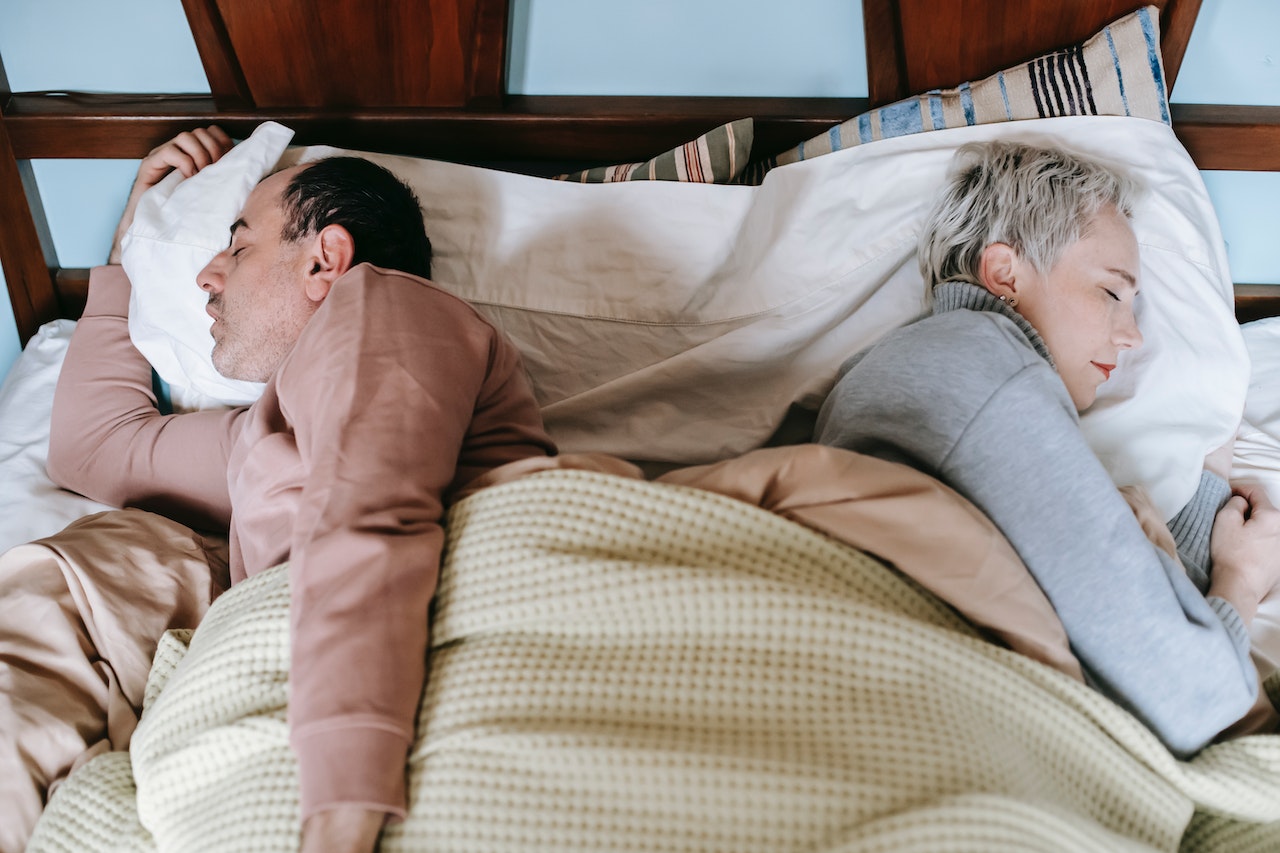There are endless fun facts about sleep we could all benefit from learning – and researchers are consistently revealing more!
Despite a solid understanding of the importance of sleep, many of us still don’t get enough.
In fact, as many as one-third of adults run low on sleep, according to the National Sleep Foundation.
One potential culprit for our sleep deprivation epidemic?
Most of us still believe many common myths about how sleep works (and how it affects the body and mind).
That’s why we’ve debunked these common sleep myths – starting with the idea that the brain is inactive as we rest.
Myth #1: The Brain Is Inactive During Sleep
We’re not conscious during sleep, so that must mean the brain isn’t active. Right?
Wrong! One of the most fun facts about sleep is that the brain is busy working overtime while we rest.
If you’ve ever been told to “sleep on it” before coming to an important decision, your brain activity during rest is the supporting factor the phrase.
We all typically feel more clear-headed upon waking. This is because the brain cleanses itself of waste while we sleep.
The brain’s waste management system, known as the glymphatic system, carries fresh fluid into the brain, mixing it with waste-filled fluid from around the brain cells.
Then, this system flushes the mix out of the brain and into the blood, clearing neurotoxic waste from the mind.
@somnifix During REM sleep, the brain is up to 30% more active than when we’re awake! 🧠 #neuroscience #remsleep #didyouknow #hubermanlab #matthewwalker ♬ Big Boy Speed Up - Dj Kampung
Aside from cleaning house, the brain is also busy ridding itself of unnecessary information.
During sleep, the nerve cells within our brains make room for new connections while breaking other ones.
The same can be said for memory processing – and dreams may play a larger role in storing memories than we once thought.
Vivid dreams most commonly occur during rapid eye movement (REM) sleep.
During non-REM sleep phases, your memories are sorted through much like your recycling. Some memories move over to short-term storage while others are filed as permanent, becoming long-term memories.
This memory organization may lead to vivid dreams in later sleep phases.
Moreover, aside from memory filing, dreams themselves may serve as preparation for future threats by training us in potential responses without any real-life danger.
It makes sense, then, that substances like alcohol disrupt the brain’s overnight processes, leading to poor sleep.
Myth #2: Alcohol Is a Sleep-Aid
Many people find a drink or two in the evening to be relaxing, bringing on feelings of drowsiness that make it easier to initially fall asleep.
While alcohol can help you fall asleep faster, it also considerably declines your sleep quality.
Alcohol works more like a sedative than an actual sleep aid, throwing off our natural sleep cycles and leading to interrupted sleep, snoring, and even sleep apnea.

Statistically, 75 percent of men and 60 percent of women who consume alcohol before bed lose sleep due to their consumption, according to a 2020 survey.
Research has revealed that sleep disruptions caused by alcohol are related to the way alcohol lowers the production of the sleep hormone melatonin, disrupting our internal sleep-wake cycle.
If you choose to drink before bed, allow for three to four hours to pass between drinking and sleep. Stay hydrated by drinking one or two glasses of water for every alcoholic beverage.
Eat a light snack before bed to help slow the absorption of alcohol, lowering your blood alcohol content (BAC) for improved sleep quality.
If you think that the disruption of your sleep quality is no big deal (whether caused by alcohol or not), you’re wrong.
Myth #3: Sleep Quantity Matters More Than Quality
We’ve all heard that most people need eight hours of sleep. That said, one of the most fun facts about sleep is that we all need differing amounts – and they vary pretty widely!
Some people may need as little as six hours per night or as many as 10, according to the National Sleep Foundation.
That said, our sleep quality matters more than the amount of sleep we get.

On top of that, some people may prefer to keep differing schedules with different amounts of sleep based on their sleep chronotype.
Your sleep chronotype is trickier than just being a night owl or an early bird – it refers to the time of day that you’re naturally tired versus the time of day you’re naturally most productive.
Our age, health, and energy levels may also affect the amount of sleep we need. No matter the duration of our rest, we run the risk of becoming dangerously sleep-deprived if it’s not quality sleep.
Over time, this leads to sleep debt. And it’s hard to pay off.
Myth #4: Sleeping In Is The Antidote for Sleep Debt
When we repeatedly experience poor sleep quality, sleep debt quickly builds.
Just like any debt, it’s easy to acquire and challenging to pay off.
Many of us think that sleeping in on the weekends is a quick fix for poor sleep quality during the week.
Truth is, falling into this habit wreaks havoc on our sleep patterns, only leading to worsened sleep deprivation.
As sleep debt worsens, so does our risk of making dangerous or life-threatening mistakes at work, while on the road, or at home.
While sleeping in on the weekends may cause you to feel more energized, this feeling is just a facade.
Even just a deficit of one lost hour of quality sleep in one night can take anywhere from four to nine days to pay off.
So what’s the best way to pay off sleep debt? Pay close attention to your sleep hygiene habits and add in a few extra hours here and there consistently throughout the week rather than all at once.
A great first step to addressing sleep hygiene is to turn your attention to your overnight airway health.
Myth #5: Snoring is Harmless
Many of us think of snoring as a cute, annoying, or harmless quirk. When it comes to revealing fun facts about sleep, it’s important to learn how dangerous snoring truly is.
Snoring is typically a sign of sleep-disordered breathing or an underlying sleep disorder like obstructive sleep apnea (OSA).
If left untreated, snoring increases our risk for health complications like diabetes, obesity, stroke, heart attack, and other cardiovascular problems.
A sleep study can rule out sleep apnea, which typically requires continuous positive airway pressure (CPAP) therapy treatment.
That said, certain lifestyle changes can minimize snoring regardless of the cause.
For example, switching your breathing patterns from mouth breathing to nasal breathing can help.
Mouth breathing leads to over-breathing. When we habitually mouth breathe – especially overnight – airway tissues fall backward and vibrate against one another.
These vibrations create the sound of snoring, which causes poor oxygenation and fragmented sleep.
Moreover, mouth breathing activates our fight or flight response and places the mind and body in a panicked state.
Nasal breathing, on the other hand, ensures proper oxygenation and the production of nasal nitric oxide, a vasodilator known to activate our parasympathetic nervous system, AKA our “rest and digest” response.
Nasal breathing during sleep also prevents snoring and enhances sleep quality. You’re likely asking yourself, “How do I make sure I’m nasal breathing if I’m asleep?”

Enter: mouth tape. By placing mouth tape over your lips before bed, you’ll ensure a proper lip seal that prevents mouth breathing all night long.
Be warned, though! Certain tapes contain chemicals within their adhesives that irritate the skin. No one wants a rash!
SomniFix, however, was designed with sensitive skin in mind.
Our strips are free of latex and gluten. They’re also hypoallergenic, leading to a lip seal so comfortable you’ll forget you’re wearing mouth tape at all.
Just when you thought it couldn’t get any better, our patented central breathing vent provides a backup mouth breathing option that helps you acclimate to the sensation of overnight mouth taping.
Ditch every sleep myth. Put snoring to bed by adding SomniFix to your bedtime routine tonight!

:max_bytes(150000):strip_icc()/what-is-rem-sleep-5085353-Final-89e259e298f84d9296493fcb2db9fbc8.gif)



